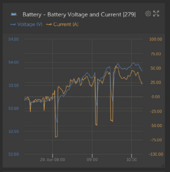Tulex
Solar Wizard
My concern is what caused the fuse to do it's job? If he had a clean install, was it a bad cell?I am sorry for your loss. Just to clarify for other readers and emphasize what others have said, the cause of the fire was the arcing from the fuse not the LFP battery.
I'm pretty sure I did a very clean job building my batteries, but can't help being concerned. Every time this sort of thing happens, I'm always anxious to hear the root cause to know I didn't make that mistake.



